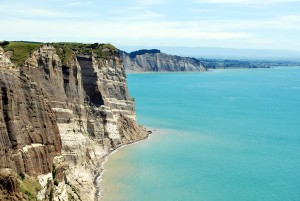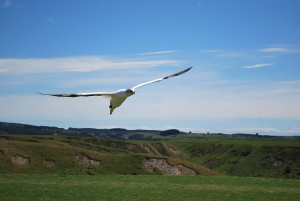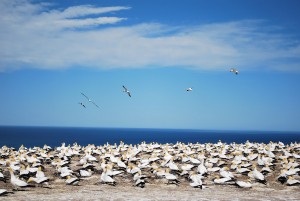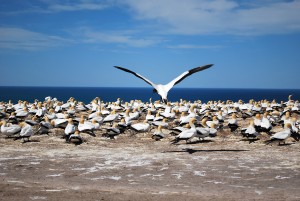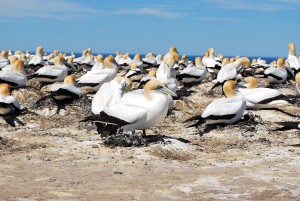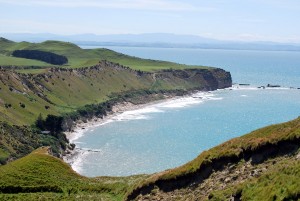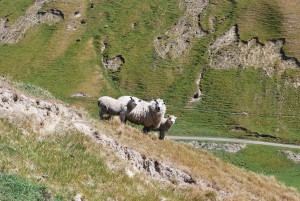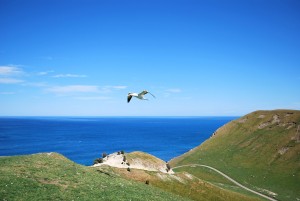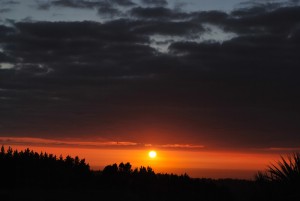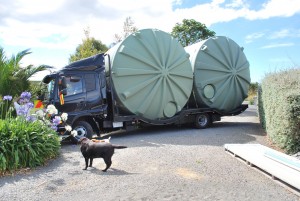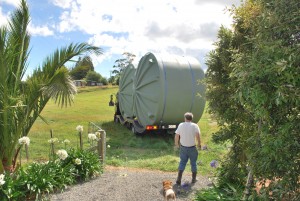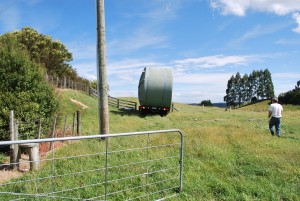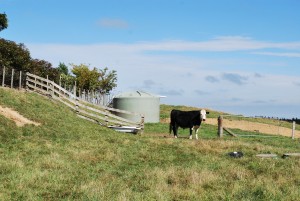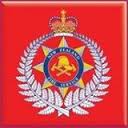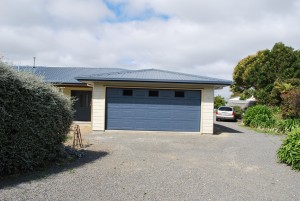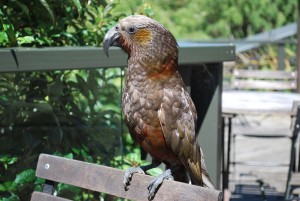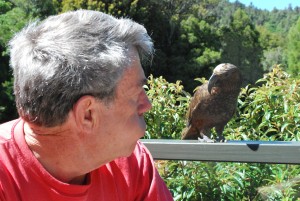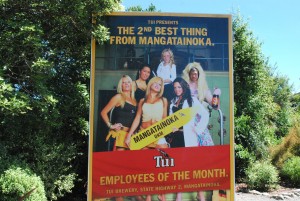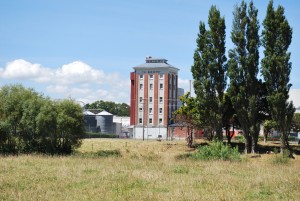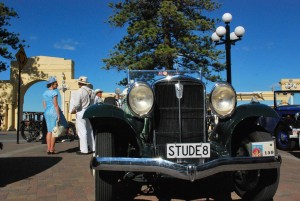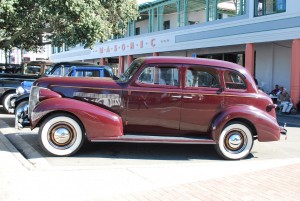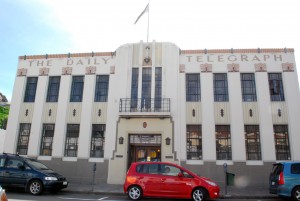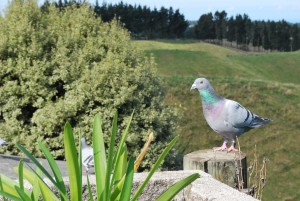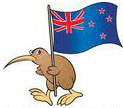 Since the status quo is maintained pretty regularly around our place, almost anything out of the ordinary becomes, if not newsworthy – at least noteworthy! From irregular occurrences on the farm, to international travel to exploring a little closer to home…. for the first time in a while, we have experienced a little of all of that and it has made time fly by.
Since the status quo is maintained pretty regularly around our place, almost anything out of the ordinary becomes, if not newsworthy – at least noteworthy! From irregular occurrences on the farm, to international travel to exploring a little closer to home…. for the first time in a while, we have experienced a little of all of that and it has made time fly by.
Since most days on our little farm pass without a ripple on the surface, we felt like things were really chaotic when, in two days we had two separate animal breakouts! The first, a cattle escape was quite strange in that not only had the cattle been going walkabout for some time, but they had apparently been putting themselves back in, so we never knew they had left our property! The neighbors did know but apparently didn’t feel like it was important enough to tell us until one wayward steer met the woman next door at her front doorstep as she was on her way to work. The second breakout came from our tiniest goat, Emily. On April Fool’s Day, we had just finished breakfast and I was washing dishes at the sink when I just happened to look out the window and see her trip-trapping down the road! I threw on some shoes and took off after her. Luckily, she only got a little way down the road and came back as soon as she saw me. Her escape route turned out to simply be a broken board that exposed a hole under the fence. Jim fixed it, so now Emily should stay put!

Who me? What’d I do?
On a more domestic note, I’ve been on a bread making kick over the last few months… more specifically a quest to make a nice sourdough loaf. I’ve only ever found really good NZ sourdough in the shops one time and that was back when we lived in Hamilton, so I’ve resorted to making it myself. After many trials and several recipes I’ve finally found one I like, albeit with a few adjustments to suit our tastes and kitchen conditions. I’ve learned that it really isn’t just a matter of following a recipe to make nice bread, it takes a lot of research and fine-tuning! In addition to the sourdough, I’ve also found a nice method of making French baguettes, so now there are always a couple in the freezer ready to put into the oven.
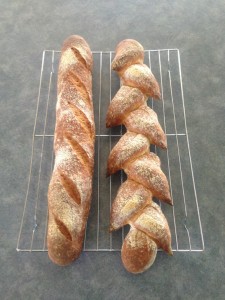
Yummy French baguettes.
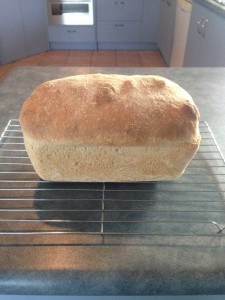
The sourdough loaf I ultimately chose after all of the experimenting.
Throughout the year we see a lot of boats and ships come and go into and out of Napier, but one Sunday as we were on our way to a bbq, I happened to notice a particularly interesting yacht sailing into Ahuriri Bay as we drove by. We didn’t have time to stop and take a picture, so I’ve borrowed the one below that appeared in our local paper, The Hawke’s Bay Today. The vessel is one of the world’s biggest personal super-yachts owned by Russian billionaire, Andrey Melnichenko. It is named “A” after his wife, Alexandra, and cost about $300 million USD! I think it is a pretty yacht and was a treat to get to see. It stayed moored in the bay all day, as it was still there when we drove by on our way home later in the afternoon. I could still see it from our house, gleaming white in the water as the setting sun reflected on its hull. Sometime later in the evening, just as it was getting dark, I looked back out and didn’t see it anymore… I guess it had headed back out to sea, continuing on its travels around New Zealand.

Russian superyacht “A”.
I’m always surprised when I see world-famous entertainers appear in little ol’ New Zealand. It’s such a small country and so far from most places that I find it unusual when bigger names play tour dates here. One such name that recently appear on the local marquis was Billy Connolly, the comedian/actor from Scotland. He apparently has come to NZ on several occasions, mostly because he just really likes the place! Jim and I have liked him for a number of years thought it would be a nice night out to watch his show. We did enjoy the performance and were surprised to hear that Connolly now has Parkinson’s Disease which will affect the amount of shows he will be able to do in the future… NZ may not be on the books after this tour.

Logo from Billy’s latest tour.
After a couple of years of being farm-bound, we finally took a vacation. With all of our birds safely at the home of fellow pigeon fanciers, Lynn and Rodger, and the dogs and cat stowed away at well-researched kennel and cattery – Jim and I headed to Samoa. We had it in our minds that this island was a good distance from New Zealand and would take about 5 hours flying time to get there, but we were pleasantly surprised to arrive at Faleolo Airport in about 3 ½ hours from Auckland. It was a real shocker to leave the cold weather of NZ and get off the plane in the heat and humidity of tropical Samoa! But, that’s exactly what we wanted – a good dose of heat to get us through the rest of winter. It took a few days to acclimatize ourselves, but after that we were good to go.

A scenic bay on the northeast side of Upolu.
The first few days of the trip we spent in the Samoan capital city of Apia. The city is home to around thirty-something thousand people and we found it be a pretty clean place as island cities go. It had no shortage of Italian restaurants and even had a well-attended McDonald’s, though several people we spoke to complained at how expensive it is! We had the opportunity to talk to a lot of the locals and they were, on the whole, very nice people – happy to give you directions, tell you where to find things, etc. The only real exception to this was the local con-men… don’t get me wrong, they were extremely nice, they just weren’t out to help you! Once you knew what to look for it was easy to pick them out as they all dressed similarly and carried the same gear. They would hit you up for “donations” for this group or that, and if all else failed, they’d try to sell you a “Samoa 2014” sarong to take home as a souvenir! One guy just wouldn’t give up and, after failing to get a donation from Jim, he at least wanted to bum a cigarette. In the end, after a lot of negotiation, the guy ended up buying the cigarette from Jim and walking off in a huff!

The clock tower is the point from which most directions begin in Apia. If you can find it, you can find most anything else!
Before leaving the Apia area, we went to see the home of writer Robert Louis Stevenson. By island standards it was a well-maintained museum and worth a visit. Unfortunately, time and the heat and humidity of the area are taking their toll on the contents and the house itself. The museum does house first edition copies of two of his novels and luckily they are kept in a sealed glass display case or else they would be doomed to the same fate of decay as the other books that are on shelves and desks throughout the home. The present owner has put a lot of money into maintaining the building, but more will be needed to ultimately save it. The grounds seem to be very well kept and the driveway is probably the prettiest I’ve ever seen. Stevenson is buried on the hillside adjacent to the property and there is a walkway to the gravesite, but after seeing a couple of very puffed and sweaty tourists emerge from the bush, we decided to pass on paying our respects!

The home of writer Robert Louis Stevenson, Villa Vailima.

The driveway leading up to Villa Vailima is beautifully planted in tropical shrubs.
After a few days in Apia, we rented a car and moved into the highlands for the remainder of the trip. It was only about 20 minutes or so out of town, but felt like a world away being in rural Samoa. We stayed in a privately owned home that was built like a Samoan falè. While traditional in style, it was thoroughly modern in convenience. Since we had to have a car to get to the falè, we took the opportunity to drive around the island of Upolu, one of the two main islands that make up the country. In most cases the roads are well marked both by signs and arrows indicating the direction of travel. Although in some cases we did see some faint two-headed arrows painted on the road that pointed in both directions! This was obviously left over from when Samoa switched from driving on the right side of the road, to the left side. I guess they figured the old part of the arrow would fade away in time!

One of the main sources of transportation on Samoa is this type of bus seen here parked in a village.
Driving around Samoa took a bit of guesswork and definitely required a map. It was fine to get directions from people to take this road or that, but the problem proved to be that there aren’t any road signs! So, it doesn’t do any good to know the name of the road. We drove around the whole of Upolu and only encountered one sign – and that included driving in Apia city. However, the daily excursions were worthwhile because we got to see what life was like in the smaller villages that dot the island. We were absolutely amazed at the number of churches on the island… in a small village of a couple hundred people, it was not unusual to see 5 or 6 good sized churches. The majority seemed to be Seventh-Day Adventist, Assembly of God, Methodist and Catholic. In Apia there was a big, beautiful, brand new Catholic Church that was one of the prettiest churches I have ever seen.

The new Catholic Church in Apia is a beautiful piece of workmanship.

The inside of Apia’s grandest church.
Most of the villages were well manicured with tropical shrubs lining the roads and peoples’ homes. We found it interesting that most modern homes (and I mean modern in the sense that they have 4 walls and a roof, rather than a thatched hut-type dwelling) also had a more traditional falè in the front of, or near the home. Falès are traditionally oval and have wooden posts holding up a domed roof. More modern versions seem to be rectangular with flat rooftops. They have no walls, but sometimes can be seen with curtain-like fabric hoisted up between the posts, presumably to block out the sun. We often saw people taking a “siesta” in them during the heat of the day.

Modern construction has the fale with a metal roof rather than thatching.
On a couple of our little driving tours we encountered large groups of school children walking home (so many, in fact, that we wondered where they possibly could have come from!). We were surprised to see the global obesity problem has even hit many of the rural school kids of Samoa. We couldn’t figure out how this could be and asked our local hostess about the issue. She said it is because of their diet… they mostly eat yams and taro (a local root vegetable) and they are almost totally composed of carbohydrates. Also, the only meat they generally get is greasy pork and their favorite part is the fat. As casual observers, we found another couple of culprits in their little roadside grocery stalls: their single serve bottle cokes are 750mls or about 25 ounces and the kids all buy after-school ice treats that are mostly sugary syrup. When you add all of that together and take into consideration that Samoans don’t lead a very active lifestyle as well, you get the very real possibility of obesity. Luckily not all have fallen victim, as our little friend below.

A friendly and curious school girl stops to have me take her picture.
In all, our time in Samoa was relaxing and enjoyable and we rate it highly in comparison to the other Pacific Islands we have visited. In no time our trip was over and we were heading back to NZ. We chose to fly out of and into Auckland rather than another, closer airport so that we could take the opportunity to visit our friends Mike and Lien who live there. As it turned out, Lien was working and Mike was only able to chat for a little while due to a bridge tournament! But, two weeks later they drove down to visit us as part of their Anniversary Weekend out. Instead of spending the day catching up at the house like we usually do, we all packed into the car for a 10 minute drive to a little scenic spot that Jim and I have been driving by for two years but have never stopped to investigate. It was a bit of a hike, but we were rewarded with two pretty nice waterfalls for the effort!

The first of two waterfalls not far from our house, Te Ana Falls.
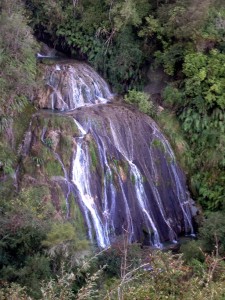
The second is the three-tiered Tangoio Falls.
Recent weeks have been a nice reminder of the beautiful things we have in our regional neighborhood of the South Pacific and right here on our doorstep.
